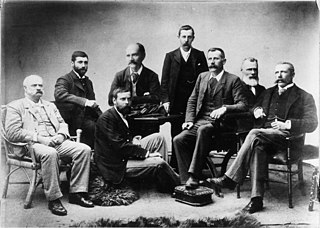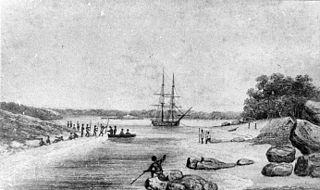 W
WThe Bindibu expedition was a series of three field trips mounted by anthropologist Donald Thomson to meet with and learn from Pintupi Indigenous Australians between 1957 and 1965.
 W
WThe Calvert Scientific Exploring Expedition took place in central and northern Western Australia in 1896 and 1897, using camels as the principal means of transport.
 W
WThe Carnegie expedition of 1896 was led by David Carnegie. It covered territory in the centre of Western Australia, including the Gibson and Great Sandy Deserts.
 W
WThe 1813 crossing of the Blue Mountains was the expedition led by Gregory Blaxland, William Lawson and William Charles Wentworth, which became the first successful crossing of the Blue Mountains in New South Wales by European settlers. The crossing enabled the settlers to access and use the land west of the mountains for farming, and made possible the establishment of Australia's first inland settlement at Bathurst.
 W
WThe Harold Hall Australian expeditions comprise a series of five main ornithological collecting expeditions carried out in the 1960s and covering much of the Australian continent.
 W
WThe Harvard Australian Expedition of 1931–1932 was a six-man venture sent by then Harvard Museum of Comparative Zoology (MCZ) director Thomas Barbour to Australia for the dual purpose of procuring specimens and studying native (living) wildlife in its natural habitat. The Expedition leader was Harvard Professor William Morton Wheeler, with the others being Dr. Philip Jackson Darlington, Jr., Dr. Glover Morrill Allen and his student Ralph Nicholson Ellis, medical officer Dr. Ira M. Dixon, and William E. Schevill . The Expedition was a success, with 341 mammal, 545 amphibian, and thousands of insect specimens returning to the United States., yet its most famous legacy and find was the accidental discovery of the world's most complete skeleton of the short-necked pliosaur Kronosaurus queenslandicus.
 W
WThe Horn Scientific Expedition was the first primarily scientific expedition to study the natural history of Central Australia, sponsored by three Australian universities. It took place from May to August 1894, with expedition members first traveling by train from Adelaide to the railhead at Oodnadatta in South Australia, then using camels for transport to traverse over 3000 km of largely uncharted country from Oodnadatta through the Finke River basin to Alice Springs and the Macdonnell Ranges in the Northern Territory.
 W
WThe Hume and Hovell expedition was one of the most important journeys of explorations undertaken in eastern Australia. In 1824 the Governor of New South Wales, Sir Thomas Brisbane, commissioned Hamilton Hume and former Royal Navy Captain William Hovell to lead an expedition to find new grazing land in the south of the colony, and also to find an answer to the mystery of where New South Wales's western rivers flowed.
 W
WPhillip Parker King's first exploring and surveying expedition departed Sydney on 22 December 1817 on board the cutter HMS Mermaid. On board were King, his two master's mates Frederick Bedwell and John Septimus Roe, the botanist Allan Cunningham, 12 seamen, 2 boys and the native Boongaree. The purpose of the voyage was to explore and make a rough survey of the northern and north-west coasts of Australia.